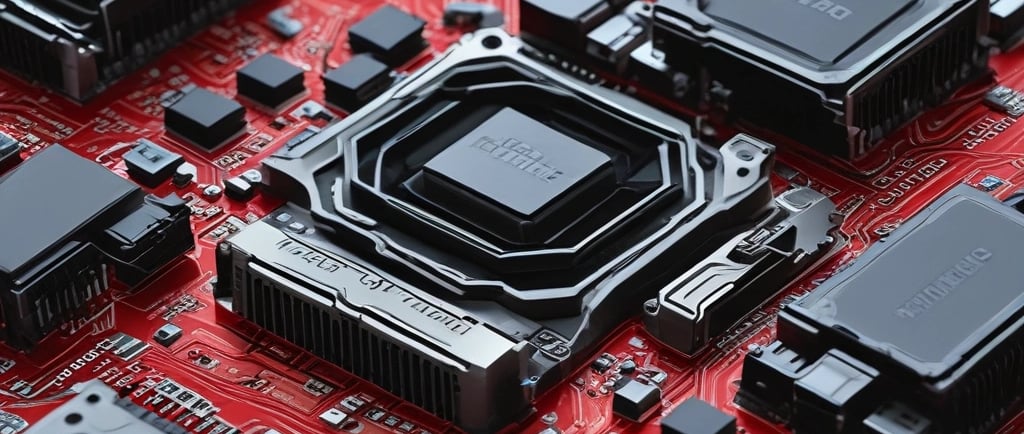Unlocking GPU Performance: Heterogeneous Design
Sushil Rawal


The Graphics Processing Unit (GPU) has undergone one of the most dramatic transformations in all of tech. Once a specialized component for rendering game visuals, it has become the beating heart of modern computing, powering everything from photorealistic gaming to groundbreaking scientific discovery. The latest generation of GPUs from industry leaders NVIDIA, AMD, and Intel isn't just about more frames per second—it's about a fundamental shift in what a computer can do.
We are in the era of the "AI PC," and the GPU is its brain.
The Architectural Leap: specialized Cores Take Over
The raw performance of today's GPUs comes from a move away from a one-size-fits-all design. Modern GPUs are heterogeneous powerhouses, built with specialized cores for specific tasks:
Stream Processors (AMD) / CUDA Cores (NVIDIA): These are the traditional, general-purpose workhorses that handle the bulk of graphics rendering.
Ray Tracing (RT) Cores: Dedicated hardware for calculating how light interacts with virtual objects in real-time. The latest generation of these cores (like NVIDIA's RTX 40 Series and AMD's RX 7000 Series) are dramatically faster, making ray-traced lighting and reflections a practical reality in games without catastrophic performance loss.
Tensor Cores (NVIDIA) / AI Accelerators (AMD & Intel): This is the star of the show. These cores are specifically designed for matrix math, which is the foundation of Artificial Intelligence and neural networks. They power NVIDIA's DLSS, AMD's FSR, and Intel's XeSS—AI-based upscaling technologies that are game-changers.
AI Upscaling: The Killer Feature You Can't Live Without
If there's one feature that defines the latest GPU generation, it's AI-powered upscaling.
How it Works: Instead of rendering a game at a demanding native 4K resolution, the GPU renders it at a lower resolution (like 1440p) and then uses its dedicated AI cores to intelligently reconstruct and "upscale" the image to 4K. The result? Image quality that often rivals native 4K, but with a massive 50-100% boost in performance.
The Technologies: NVIDIA leads with DLSS 3, which introduced a revolutionary feature called Frame Generation. This AI doesn't just upscale pixels; it generates entirely new frames between existing ones, effectively doubling smoothness. AMD's FSR 3 and Intel's XeSS have followed suit with their own frame generation solutions, making this technology accessible across all brands.
This isn't just for gamers. AI upscaling is finding uses in video editing and streaming, enhancing media quality in real-time.
The Players: A Three-Horse Race
The current market is more competitive than ever, giving consumers real choice.
1. NVIDIA (GeForce RTX 40 Series)
NVIDIA continues to push the envelope with its AI-driven approach. The flagship RTX 4090 is a monster of performance, but the real story is the efficiency of the entire lineup. With DLSS 3 Frame Generation, even mid-range cards like the RTX 4070 can deliver incredibly smooth high-resolution gaming. NVIDIA's software ecosystem, including broadcast and creative tools powered by AI, gives it a strong edge for creators.
2. AMD (Radeon RX 7000 Series)
AMD is competing aggressively on value and raw rasterization performance (traditional rendering). Their RDNA 3 architecture, featured in cards like the RX 7900 XTX, uses a revolutionary chiplet design—similar to their CPUs—to improve efficiency and power high resolutions. With FSR 3, AMD has closed the feature gap, making frame generation available on a wider range of cards, including older models and even competitors'.
3. Intel (Arc A-Series)
The newcomer, Intel, has shaken up the market with its Arc A770 and A750 cards. While they had a rocky start, mature drivers have unlocked their potential. They offer exceptional value for 1080p and 1440p gaming and support modern features like ray tracing and their own AI upscaler, XeSS. Their presence is driving innovation and keeping prices competitive.
Beyond Gaming: The GPU as a Universal Compute Engine
The implications of these powerful, AI-native GPUs extend far beyond your gaming rig.
Content Creation: Video editors, 3D artists, and streamers benefit massively. AI can now handle tasks like automatically removing backgrounds, enhancing audio, upscaling old footage, and rendering complex scenes in a fraction of the time.
The "AI PC": New laptops and desktops are being marketed as "AI PCs," featuring NPUs (Neural Processing Units) alongside their GPUs. This allows for on-device AI tasks like live translation, advanced noise cancellation, and powerful creative assistants without needing an internet connection.
Scientific Research: From simulating protein folding for drug discovery to modeling climate change, the parallel processing power of modern GPUs is accelerating research that was previously impossible.
What Should You Look For?
When considering a latest-gen GPU, don't just look at the teraflops.
For Gamers: Prioritize cards that support the latest upscaling tech (DLSS 3, FSR 3, XeSS). The performance uplift is simply too significant to ignore. A card with good ray tracing and AI upscaling will future-proof your system.
For Creators: Look at VRAM capacity. 12GB is becoming the new comfortable minimum for high-resolution content work, with 16GB+ being ideal. Also, investigate the software ecosystem and AI-powered creative tools each brand offers.
For Everyone: Power consumption is key. The latest generations are more efficient, but high-end models still require robust power supplies.
The Bottom Line
The latest GPUs represent a paradigm shift. We are no longer just buying a graphics card; we are buying an AI-accelerated parallel computing engine that happens to be incredible for games. This fusion of graphics and artificial intelligence is not just improving frame rates—it's fundamentally expanding the role of the personal computer, putting capabilities that were once confined to supercomputers and data centers directly into our hands. The future of computing is parallel, visual, and intelligent, and the GPU is leading the charge.